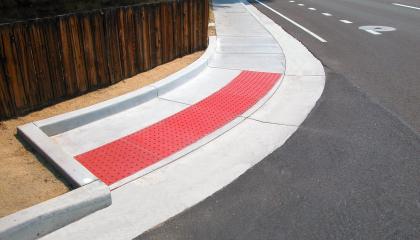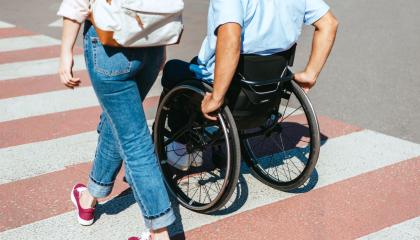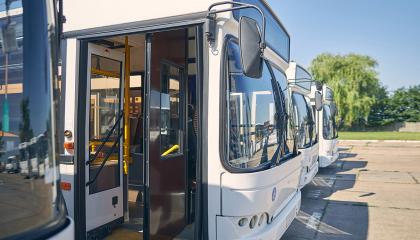As Texas cities continue to push for inclusivity, the focus has squarely fallen on creating a more accessible environment for everyone. A clear emphasis on this initiative is evident in Dallas and Arlington, Texas, where custom ADA-compliant signs and improved pedestrian accessibility, respectively, have been making headlines.
When designing tactile warning systems, one often overlooked yet critical aspect is color contrast. Color contrast plays a significant role in ensuring the effectiveness and accessibility of these systems for individuals with visual impairments. By strategically incorporating contrasting colors, we can greatly enhance the usability and safety of tactile warning systems.
There are detectable warning surfaces everywhere, including the base of every ramp leading to the street and at the corner of every intersection. Even though individuals frequently walk over these surfaces without giving them much thought, they play a crucial role in many people's lives, including those with limited or no vision.
When going on a vacation, wheelchair users may want to consider the accessibility of the city they are planning to visit. Wheelchairs can go to more places in the United States than ever, and these are the five most accessible cities for wheelchair users to adventure:
While walking on the sidewalks, you may have noticed small, colorful bumps where the sidewalk meets the road. What are these bumps? Why are they placed so strategically at the edge of the sidewalk, at crosswalks, and near public transportation? What purpose do they serve? Are they there to increase the grip on the road? Or, do they serve some other purpose? Let’s find out!
Most suburban areas in the United States are created for the able-bodied individuals who own a car. Neighborhoods rarely have sidewalks, and many roads are long connecting points between neighborhoods and shopping centers. While suburbia may be a great area for a casual stroll, it’s not exactly great for those trying to get from home to work.
First and foremost, detectable warning tiles and surfaces were designed to assist individuals with disabilities to safely navigate public spaces, and then, in 1991, the Americans with Disabilities Act (ADA) mandated the use of detectable warning tiles in public areas throughout the United States.
The development of larger cities grew exponentially in the past fifty years, leaving us with rapidly built cities that have given too little thought to the disabled members of their population. Now is the time to reassess how to be more inclusive in the built environment so that people of all abilities and diversity experience a living environment that meets their needs.
To serve the community of individuals with disabilities, many state and local governments and some private companies have established paratransit transportation options. Paratransit transportation is meant to supplement public fixed-route bus and rail systems for individuals with severe impairments. From a taxi-like service to a semi-defined route, paratransit services often have varying levels of flexibility.
An accessible world is crucial for people of all abilities to work, live, and play. However, even in the most progressive cities, people with disabilities struggle to live their lives, which only gets worse in the suburbs and rural areas.
With an estimated one billion people to become urban-dwellers by 2050, many cities recognize the need to shift to more accessibility. Beyond the physical difficulty of navigating city and suburban obstacles, many individuals with disabilities must deal with a level of fear as they try to move through a world that is more or less inaccessible.
Pagination
- Page 1
- Next page
Connect with us
We pride ourselves on our customer service, and we'd love to hear from you! Sign up for our newsletter to keep up with industry updates and trends, as well as any new product releases.












